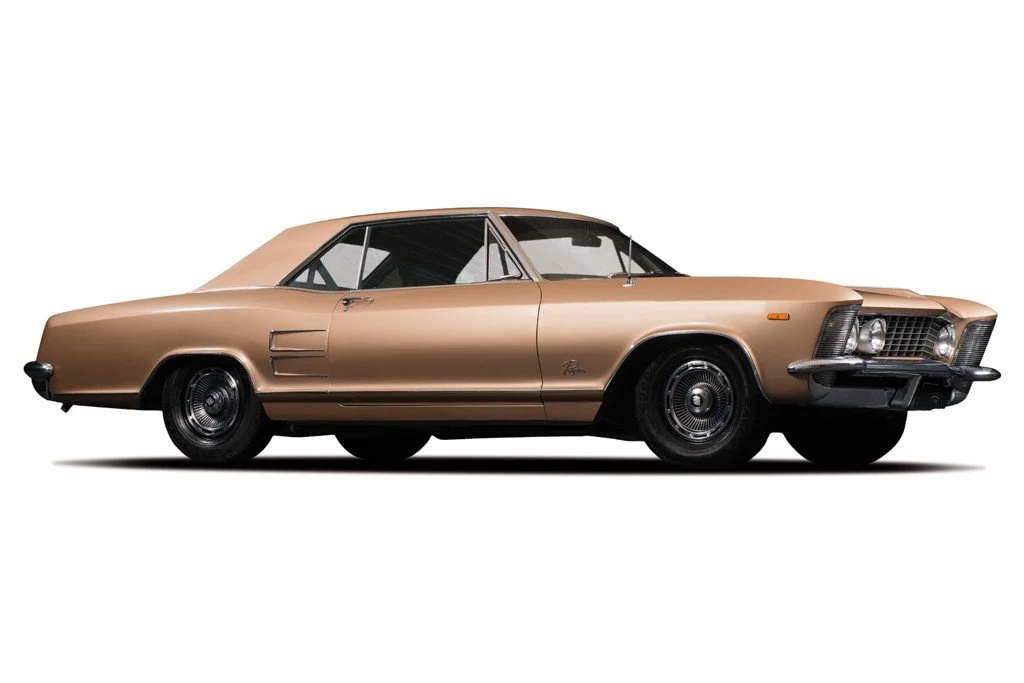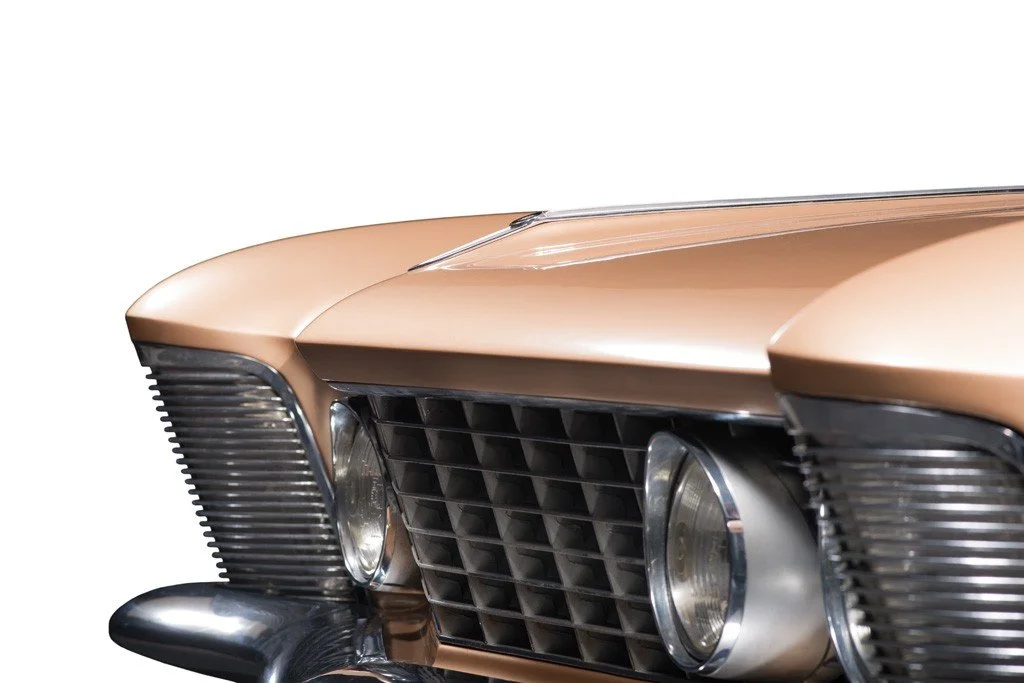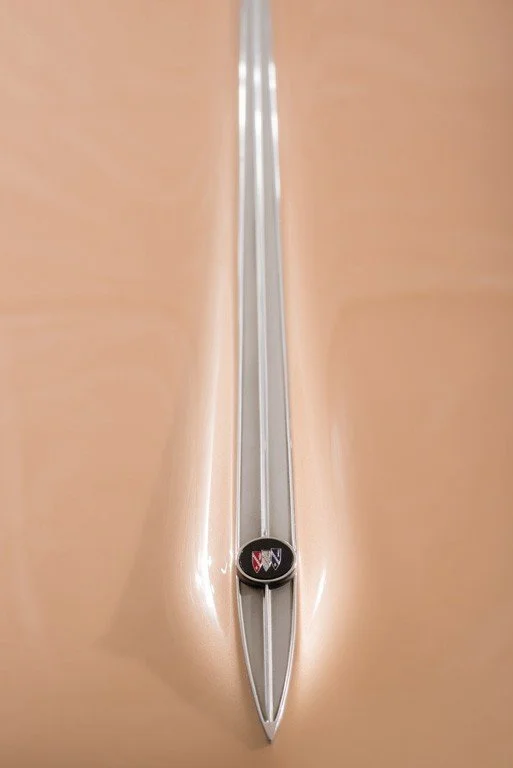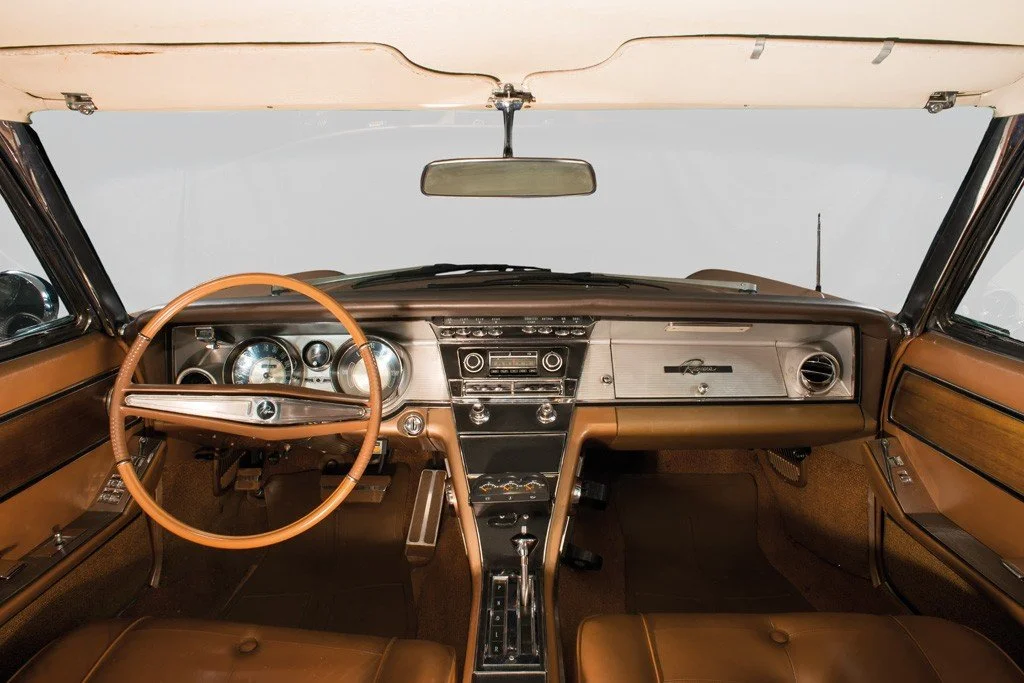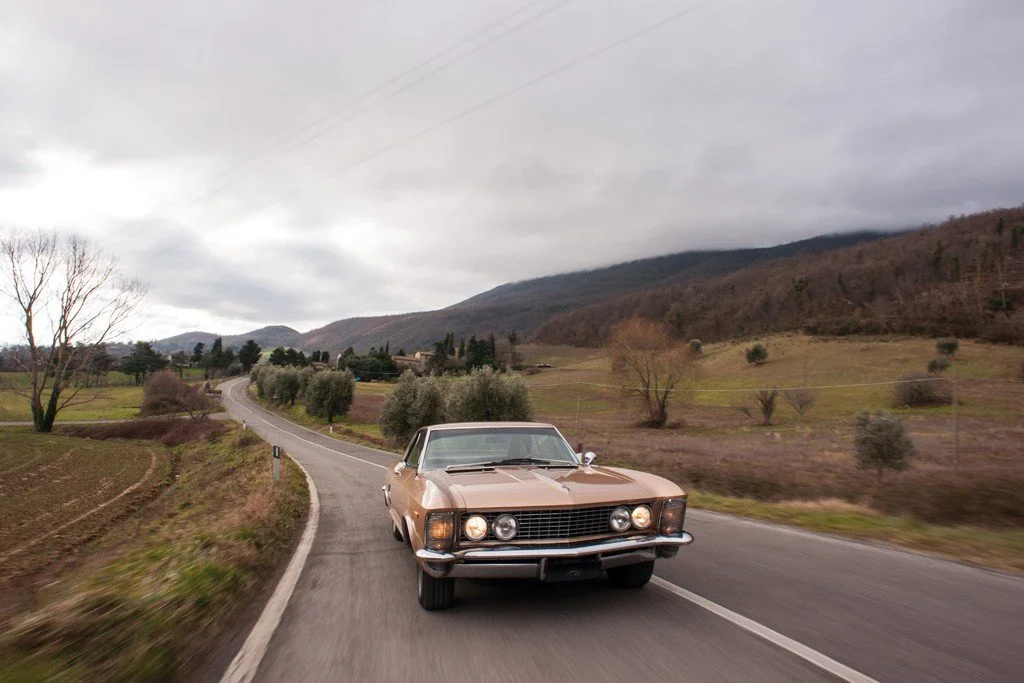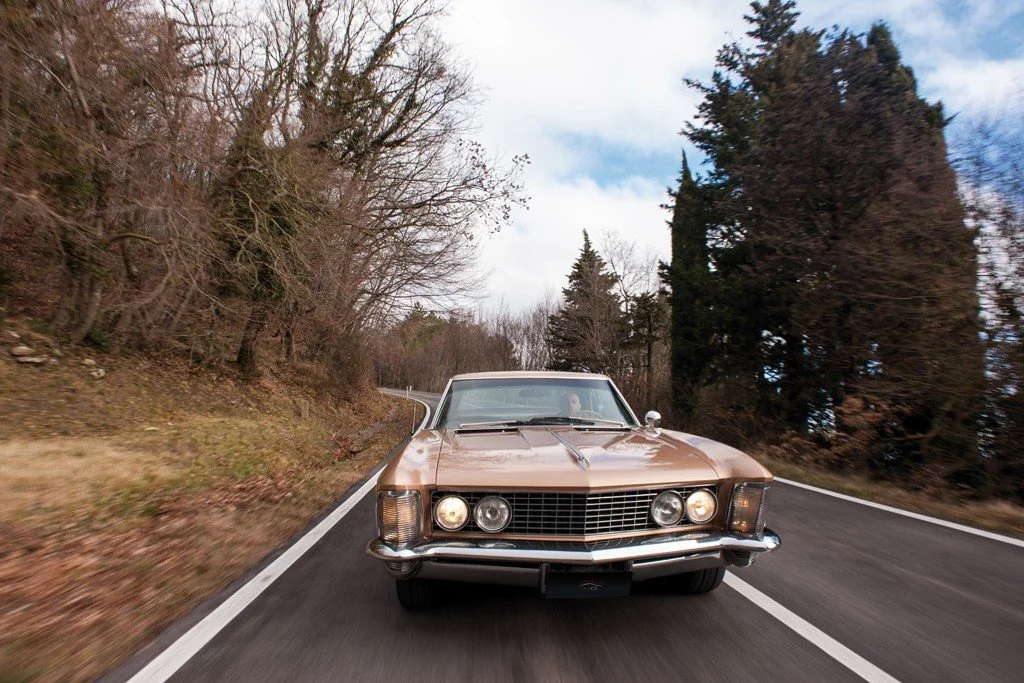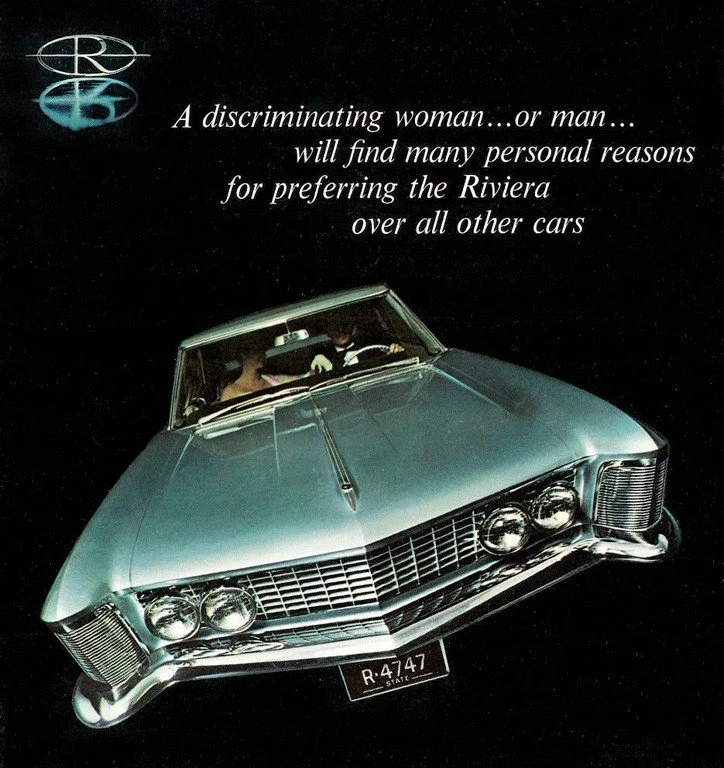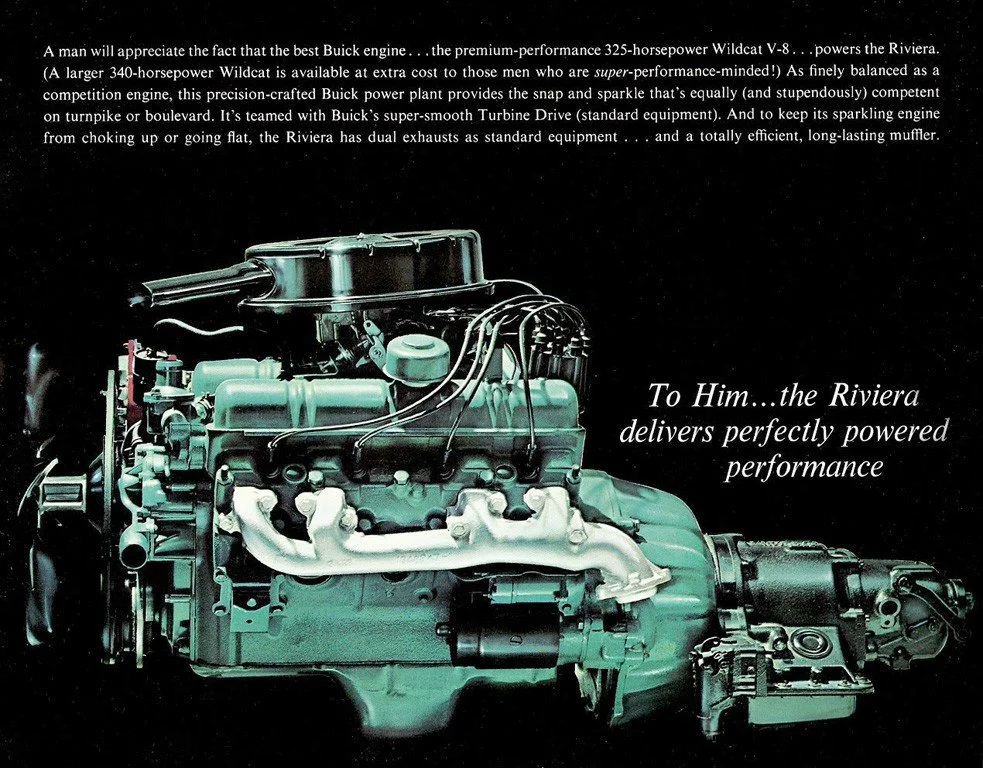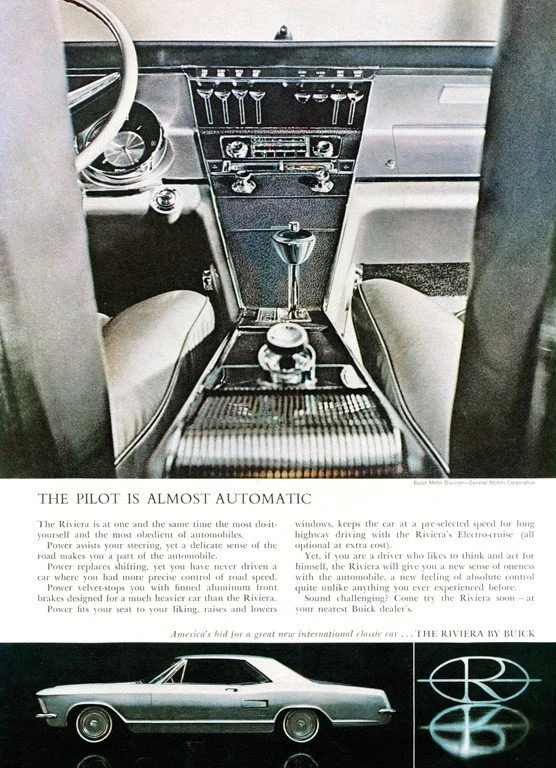-
The Buick Riviera story began with the 1963 model, presented to the public on October 4th, 1962. For American and international automobile history, this is a date to be remembered as it marked the debut of one of the most representative cars of the sixties. A style initially conceived by William “Bill” Mitchell to re-launch the glorious LaSalle marque, discontinued by General Motors after 1940.
This example in the Bulgari Collection, completely preserved, apart from the twice-renovated body paintwork, is equipped with a standard 401 cid engine. This 1963 Buick Riviera was owned from new by the chief of the Los Angeles Fire Department.
Admiring the interior, one can note some accessories available at extra cost. The most obvious is the design “Custom Interior” with wood veneer finish on the side panels and full-length door armrests with an additional latch to enable rear passengers to open the doors. It also has electric windows, air conditioning and a radio with a power antenna. The Buick Riviera was so well equipped that in 1963 it was twenty years ahead in comparison to the usual European production of deluxe cars. For enthusiasts, the 1963 model (together with the ’71 model) remains the most sought after of all the Rivieras. -
Company
General MotorsWheelbase
117inInterior trim
Sandalwood vinylBrakes
front and rear drumsMake
BuickLength
208inEngine
V8 - 401cidTires
7.10x15Model
RivieraWidth
76.4inCarburetor
1 Rochester 4GG 4-barrelOriginal Price
$4,333Body style
2-door Hardtop CoupeWeight
4140lbsHorsepower
325hp @ 4400rpmProduction
40,000Model year
1963Exterior paint
Bronze MistTransmission
Turbine Drive Dynaflow automatic 2-speed -
The 1963 Buick Riviera was General Motors' first true competitor for the Ford Thunderbird, which was introduced in 1955 as a sporty personal car but evolved into a personal luxury car for 1958. In fact, the 1958 Thunderbird created the personal luxury car market segment. The Riviera was intended to appeal to the same type of buyer who up to this point only had the Thunderbird to consider. The Riviera was designed to attract car buyers who desired something special, something more unique than their neighbors’ Cadillacs or Lincolns. This buyer recognized quality when they saw it, but quality wasn't enough. This buyer also demanded styling that stood apart from all other cars, and required a level of standard equipment sufficient that the base package was impressive without a lot of extra cost options, but every option imaginable should be offered on the car, so it could be custom ordered to the exact preferences of the buyer.
The GM Design Staff of Bill Mitchell, Buick Research and Development, and the Marketing Group all worked in concert to come up with the unique Riviera package, which had originally been envisioned as a Cadillac. But Cadillac didn't want or need the Riviera, as it was already selling everything it made, and was in the early stages of developing its own personal luxury car, which would be introduced in just a few years as the 1967 Cadillac Eldorado. The Riviera was assigned to the Buick Division after Buick pulled out all the stops to get it. Buick sales had been down for several years at this time, and Buick desperately wanted something new and fresh to bring customers into their dealers’ showrooms, and Buick hoped the Riviera was it. At 117 inches, the new Riviera featured a somewhat compact wheelbase for the luxury market. For comparison, this was nine inches shorter than the Buick Electra.
Frameless side glass was introduced on the 1963 Riviera. This new innovation eliminated the metal trim that outlined the edge of glass on hardtop models. Elimination of the metal band gave the Riviera a cleaner look, and many other cars would utilize this design in the coming years.
Performance was an important consideration in the personal luxury market, and the Riviera's power source was the 401 cubic inch "Wildcat 445" V-8 engine with 325 horsepower at 4400 rpm. An optional engine was available for those who wanted even more enthusiasm in the form of a bored-out 425 cubic inch "Wildcat 465" V-8, which produced an impressive 340 horsepower at 4400 rpm. The 1963 Riviera engines were painted Silver (the only time this color would be used), and featured an oversized air filter painted in Wrinkle Red. The Buick Turbine Drive Dynaflow Transmission, a Buick staple since 1947, transferred the momentum from the engine to the drive shaft.
The Riviera had a base price of $4,333, which was expensive compared to other two door hardtops at the time, but was less than other traditional luxury cars. An impressive level of standard equipment was provided in order to compete item for item with the Thunderbird.
A total of three different interiors were available for the 1963 Riviera, one standard and two optional. The standard interior featured all-vinyl bucket seats in three colors. The two optional interiors were the Custom Fabric and Vinyl Trim, or the Custom Leather and Vinyl Trim.
In its very first year, the Riviera introduced an industry first: flush glass. The unique manner in which its windscreen and rear window were sealed directly to the body allowed the glass to fit flush, and eliminated the bulky metal and rubber framework required on other automobiles.
Buick Division announced that production for the Riviera's debut year would be limited to just 40,000 units. Of course all were sold, and production going forward would not be limited by anything other than demand.

